Renewing Scotland: Part 1 – Grasping the Grid here
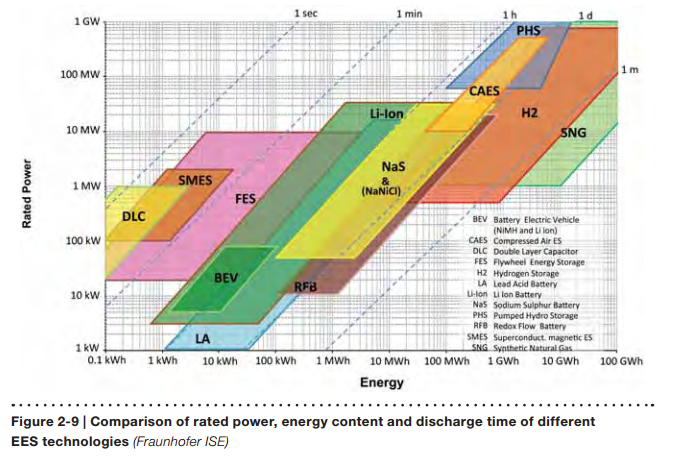
Source here
In my last article I discussed the set up of the UK electrical grid and outlined why its design is not conductive to the development of a renewable future based largely in Scotland and that that potential future, should we develop it, would vastly outstrip our own demand.
In this one I’ll be taking a look at some of the technology which will get us there. The generation side of things has already been well discussed but one of the large detracting claims against renewables is their intermittent nature and the need for energy storage. In this, large and rapid steps are already being taken. Of course, there’s only so much that a 2,000 word blog post can discuss in an area that can cover many books and hours of lectures. This is just an introduction to a vast area of research.
The Wind Blows High, The Wind Blows Low
The first thing anyone can tell you about most renewables is that they are either intermittent, unpredictable or both. The wind is usually blowing somewhere but the strength of the wind is highly variable at any particular site.
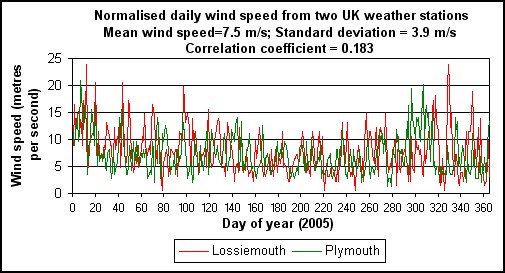
In the UK, the wind blows fast enough to turn a turbine more than 95% of the time but this may still leave the equivalent of several days in the year when there’s almost no power generation no matter how many turbines there are. Similar issues may occur with solar – it is, of course, dark at night and short, gloomy winter days won’t produce as much power as Scotland’s annual sunny Tuesday in July – and while tidal power, like Scotland’s new Meygen installation, is predictable years in advance, they only produce power according to the cycle of the tides which may not be in sync with demand. It should be noted though that with proper understanding of siting, event intermittent tidal can produce some guaranteed baseload.
Some mileage towards our goal of 100% renewable power will be gained simply by building overcapacity into the system although this quickly increases the cost of the system. The complimentary nature of our renewable sources is also a major boon. As it turns out, the long, solar friendly summer days of the UK and the dark windy winter nights mean that a combination of solar and wind is very nearly self balancing over longer time periods.
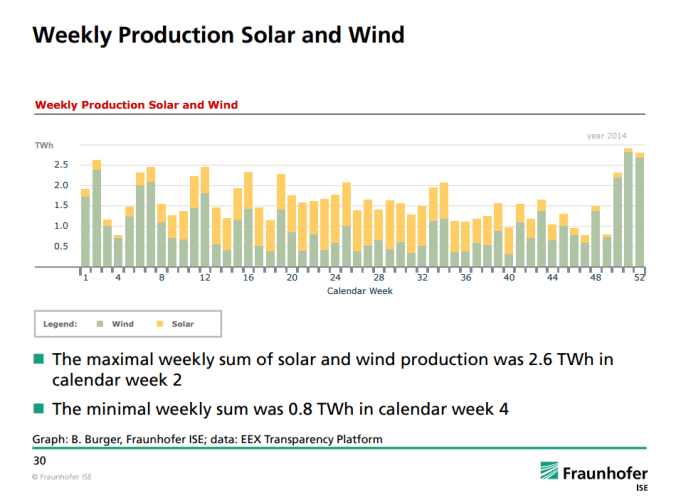
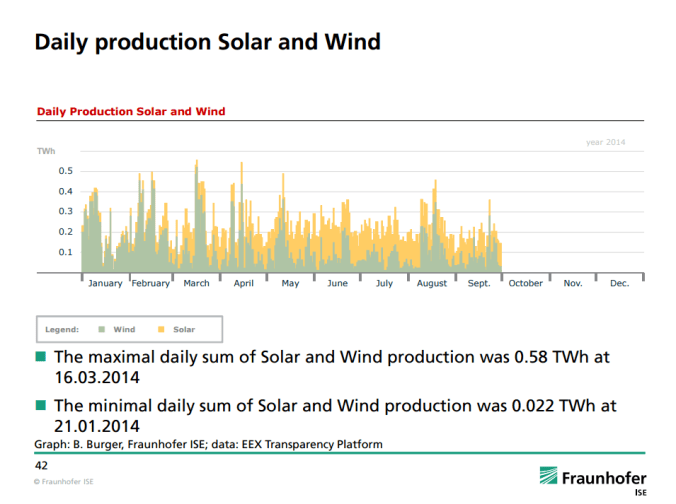
Source here
Of course, stability over days, weeks and months means little if it doesn’t also come with stability over seconds, minutes and hours. No-one wants their lights flickering or power dropping randomly. At some point, we must start considering building energy storage into the grid. This, rather than generation, will be the challenge of renewables. As pointed out in the previous part of this series, we more than have the resources, we just need to be able to spread them out so that demand is met at all times.
Bottling Lightning

Just as no one energy generator can suit every need, so no one energy storage device can suit all purposes. Every storage device has its own capacity (i.e. how much energy it can store. This can also be coupled with energy density which will determine the volume of the device for a given amount of stored energy) and its own discharge rate (which determines the power delivered by the device and also determines how long the device can run before depleted) as well as other more economic factors such as cost per kWh (Terminology note. If a device can output 1 kW of power and can maintain that for one hour before depletion, it has a storage capacity of 1 kWh) and cycle lifetime (many storage devices degrade or fail after a number of charge/discharge cycles so must be replaced regularly)
As the chart above suggests, the various technologies can be ranked according to their energy and power ratings and thus can be discussed in terms of their distinctive roles within the energy storage network.
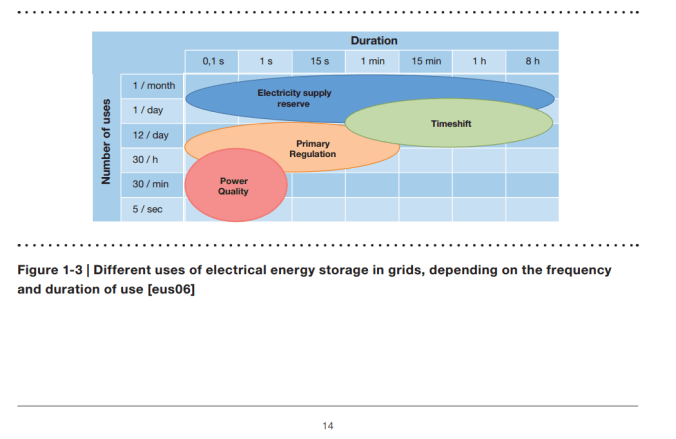
Seconds to Minutes – Surge Protecting and Load Balancing
On short timescales, we’re not so much discussing energy storage as load balancing. On extremely short timescales, less than a couple of seconds, there are various devices embedded within the grid infrastructure designed to ensure that all generators are frequency and phase matched and that the grid is free from noise.
On slightly longer scales, seconds to minutes, the amount of power supplied must match demand at all times even if the wind drops or a power station happens to go down right at the moment that everyone in the country sticks the kettle on at the end of some popular TV program or the other. It can take time to spin up turbines which are idle but conversely it can also take time for spinning turbines to wind down. In a conventional grid, this is where large powerplants, with turbines weighing many tonnes each, has an advantage over relatively small turbines found in wind generators. This time it takes for a large plant’s turbine to spin down gives the grid time to react and bring other plants online.
This problem can be mitigated by technologies such as dedicated flywheels which provide the same inertial storage as was found in the conventional generators.
Whilst the mechanical infrastructure required to run a flywheel (Vacuum pumps, cryocoolers, computer control etc) can be more complex than a battery of similar size they do have advantages in that they can have a longer lifespan in terms of charge and discharge cycles. This makes them particularly suited for rapid response and frequent use roles such as maintaining grid stability during short spikes and dips in demand and supply.
Minutes to Hours – Timeshifting and Demand Curve Smoothing
Flywheels can be used to store and deliver energy for a surprisingly long time, one recent example of a magnetically levitated, vacuum sealed flywheel can store 5 kWh and output 3 kW implying a run down time of over an hour and a half.
At some point though, some of the advantages of current battery technology begin to take over. The abovementioned flywheel is described as being moveable “by forklift” whereas a 5 kWh Li-ion battery is more like a two-person lift. The exact position of this overlap is likely to be highly dependent on how the various technologies develop but with much of the focus of current research being in batteries for the vehicle industry, the high end of this time scale is likely to be dominated by that technology for some time.
The importance of this region of storage technology lies in dealing with the various timeshifts and demand curve smoothing which will be required when managing a renewable grid. The sun shines (unsurprisingly) during the day but, especially during the winter, demand is at its highest in the evening. This may be compounded once everyone has transitioned to electric vehicles, all thirsty for a recharge after the working day although even this can be managed through smartgrid technology which can schedule your highest demand appliances such that they run when the supply/demand ratio is favourable.
This is the timescale on which much of the technology is already well established (albeit not yet at the scales required for a nation level energy storage based grid) and even with the battery sector, many technologies exist from familar Li-ion and lead-acid batteries to less well known molten sodium/sulphur cells and flow batteries (see page 20 onwards here). All of these different battery designs come with their own energy densities, power cycle lifetimes and (crucially when aiming to reach a “Green” economy) environmental impacts. New technologies may also provide further breakthroughs in the future.
Hours, Days and Longer – Power Reserves
Whilst a properly designed, diverse renewable grid will rarely see prolonged periods of demand exceeding supply it can happen. A series of cold, dull, calm winter nights with short, foggy days never giving the solar panels enough time to charge the batteries supplying our evening heaters is about the most challenging period that the Scottish grid could reasonably expect. Linking the Scottish grid to other grids around Europe and beyond will help in most cases but this ultimately merely pushes the problem around rather than ultimately solves it. There will still be instances, especially if Europe also moves towards a 100% renewable supply, when demand exceeds supply across the entire network.
To mitigate this, various longer term storage devices must be considered. Chief amongst these is pumped hydro.
This principle here is simple. Two lakes, one higher than the other, linked via a reversible turbine. When supply exceeds demand, water is pumped to the upper reservoir. When demand exceeds supply, it is dropped back down and generates electricity. The cycle efficiency of this process is remarkably high, up to 90%, and the stored water can be held for a long time compared to capacitors, flywheels and batteries, being governed by the evaporation and other losses in the reservoir. Every meter you can raise a tonne of water gives you around 9.8 kJ (2.7 Wh) of stored potential energy (before losses).
The major downside of pumped hydro is that its energy density is comparatively low meaning that very large areas need to be flooded to provide the required capacity and there are significant geographic constraints on the placement of such reservoirs. The best locations for hydro (pumped and unpumped) in Scotland have largely already been developed with significantly constrains further expansion.
Offshore water resources can offer some additional capacity here in the form of lagoon storage tidal – although without pumping this can only raise water by a couple of meters meaning vast areas must be encircled to capture enough energy to be useful and the power can only be released when the tide is lower than the stored water which reduces the ability of the storage to produce energy on demand.
Another more speculative offshore hydro storage method is currently in development off the coast of Belgium. This method involves building a shaft out at sea from which the water can be pumped out to create the required potential energy drop. The process can then be reversed and the sea allowed to flow back into the shaft. If the engineering challenges allow this to be built in seas more than a couple of tens of meters deep then this technology could greatly compliment Scotland’s offshore wind resources.
Which takes us to one last set of ideas for long term storage.
With a surfeit of cheap offshore energy at our disposal we could be channeling some of it into energy intensive chemical storage processes. One of the conceptually simplest methods is cracking seawater into hydrogen. The hydrogen economy is one which is still vying for some share of the post-internal combustion vehicle industry given that hydrogen fuel cells offer some of the highest energy density processes by unit mass of any chemical reaction. The problems with it is that hydrogen also offers the lowest energy density chemical reaction per unit volume – a pipe carrying hydrogen gas needs to be substantially larger than a pipe carrying a similar mass of natural gas. There are also material considerations as hydrogen tends to adsorb into, embrittle and escape from just about anything you try to pump it through. To save on infrastructure, we could consider blending the hydrogen into the existing natural gas network but this only takes us so far as we can only blend in so much without affecting the quality of the gas. Finally, there are concepts involving of combining liquid hydrogen (cooled to below 20 K, -253 C) with superconducting electrical lines (cooled by the hydrogen) but these too are a long way off practical realisation.
But wait a moment. That idea of using the existing natural gas infrastructure. Why not take that a step further too? Why not extract not just hydrogen from seawater by CO2 as well? If we can do that, we can make use of an economy already so addicted to oil that it’s difficult to change and turn it to our advantage. We could make carbon neutral hydrocarbons, store them until they are needed and then either burn them in our vehicles (assuming the process turns out to be cleaner and more effective than electrical cars turn out to be) or in existing gas power plants (assuming localised pollution issues are taken care of) or create some kind of fuel cell economy based on them.
The US navy is experimenting with this idea in order to shorten supply lines for their aircraft carriers as well as enabling them to keep operational when the nearest refueling station may well be the one they are currently bombing into rubble but Scotland could adapt for more peaceful means. It’s also the first step along the way to going from a low carbon economy, through a carbon neutral economy and onwards to a carbon negative economy where we are pulling more excess CO2 out of the environment than we are putting in (which will be an essential step if we want to not only avoid climate change damage but if we want to fix the damage we’ve already caused).
This process is (currently) fairly inefficient, involves moving vast quantities of water (the concept above processes 23,000 litres of water for every litre of fuel produces) and carries some problems to be solved involving the capturing of excess methane (methane is 25 times as potent a greenhouse gas as carbon dioxide so any leakage could lead to our carbon removal scheme doing more harm than good) but I could well see an offshore rig built in the middle of an offshore wind farm acting not only as a service base and energy storage platform for the turbines but also as a plant producing natural gas and other hydrocarbons and piping them ashore. There’s an idea that could turn Scotland into an oil producing nation, sustaining high skill offshore work for as long as the wind blows and the tide turns.
And I bet that’s an energy plan you never thought you’d see come from a Green.
Finally
So we’ve looked at the current status of the electrical grid in Scotland and now we’ve examined what’s needed to store energy and mitigate intermittency in supply. In the next part, I’ll try and give some idea of what the whole renewable grid would look like when it’s up and running. And just to finish off this already fairly video heavy post I’ll leave off with just one more explaining a few more storage devices (including stored heat which is a whole other area I haven’t covered) and their pros and cons.

Discover more from The Common Green
Subscribe to get the latest posts sent to your email.
“The best locations for hydro (pumped and unpumped) in Scotland have largely already been developed with significantly constrains further expansion.”
____
Actually, the single best location for pumped-storage hydro in Scotland is undeveloped.
Read all about my proposed development, here, on my Scottish Scientist blog –
“World’s biggest-ever pumped-storage hydro-scheme, for Scotland?”
https://scottishscientist.wordpress.com/2015/04/15/worlds-biggest-ever-pumped-storage-hydro-scheme-for-scotland/
“The map shows how and where the biggest-ever pumped-storage hydro-scheme could be built – Strathdearn in the Scottish Highlands.
Energy storage capacity
The scheme requires a massive dam about 300 metres high and 2,000 metres long to impound about 4.4 billion metres-cubed of water in the upper glen of the River Findhorn. The surface elevation of the reservoir so impounded would be as much as 650 metres when full and the surface area would be as much as 40 square-kilometres.
The maximum potential energy which could be stored by such a scheme is colossal – about 6800 Gigawatt-hours – or 283 Gigawatt-days – enough capacity to balance and back-up the intermittent renewable energy generators such as wind and solar power for the whole of Europe!”
Power
There would need to be two pumping and turbine generating stations at different locations – one by the sea at Inverness which pumps sea-water uphill via pressurised pipes to 300 metres of elevation to a water well head which feeds an unpressurised canal in which water flows to and from the other pumping and turbine generating station at the base of the dam which pumps water up into the reservoir impounded by the dam.
To fill or empty the reservoir in a day would require a flow rate of 51,000 metres-cubed per second, the equivalent of the discharge flow from the Congo River, only surpassed by the Amazon!
The power capacity emptying at such a flow rate could be equally colossal. When nearly empty and powering only the lower turbines by the sea, then about 132 GW could be produced. When nearly full and the upper turbines at the base of the dam fully powered too then about 264 GW could be produced.
LikeLike
“One of the conceptually simplest methods is cracking seawater into hydrogen.”
____
“Off-Shore Electricity from Wind, Solar and Hydrogen Power”
https://scottishscientist.wordpress.com/2015/04/23/off-shore-electricity-from-wind-solar-and-hydrogen-power/
The diagram shows how hydrogen gas can be used to store energy from renewable-energy platforms floating at sea by sending any surplus wind and solar electrical power down a sub-sea cable to power underwater high-pressure electrolysis to make compressed hydrogen to store in underwater inflatable gas-bags.
It’s potentially very cheap because no super-strong pressure containment vessels are required – the ambient hydrostatic pressure which is proportional to depth serves to compress the hydrogen gas to containable densities.
LikeLike
“Some mileage towards our goal of 100% renewable power will be gained simply by building overcapacity into the system although this quickly increases the cost of the system”
___
Modelling of wind and pumped-storage power
https://scottishscientist.wordpress.com/2015/04/03/scientific-computer-modelling-of-wind-pumped-storage-hydro/
“I used estimated relative costs of wind turbines versus pumped-storage hydro to arrive at a optimal minimum cost balance –
• store energy capacity = 1.5 days x peak demand power
• annual maximum wind power = 7 x peak demand power
Such modelling can predict how much wind power and pumped-storage energy capacity should be installed for satisfactory renewables-only generation.”
_____
But that’s “minimum cost balance” estimated only for a such a simple system.
Without any modelling or estimates to back my hunch up, I presume it must lower overall system costs to use a 2 or 3 tier energy store, for example –
1. pumped-storage hydro
2. wind-power-to-gas (hydrogen)
3. biomass burning power station
LikeLike
Very interesting stuff throughout, thank you. I hope you won’t mind if I take some time to dive into your numbers in some detail.
LikeLiked by 1 person